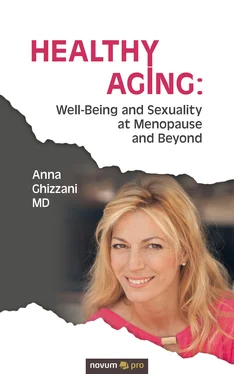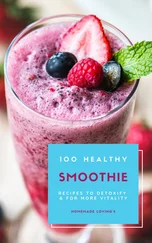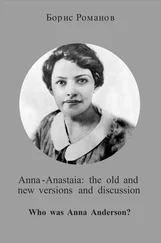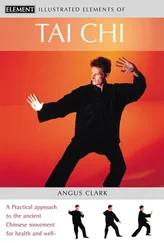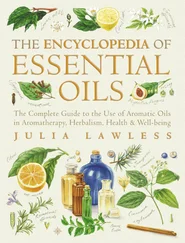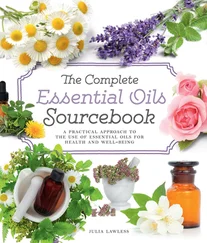Imprint Imprint All rights of distribution, also through movies, radio and television, photomechanical reproduction, sound carrier, electronic medium and reprinting in excerpts are reserved. © 2020 novum publishing ISBN print edition: 978-1-64268-145-1 ISBN e-book: 978-1-64268-146-8 Editor: Karen Simmering Cover images: Brainsil, Ihor Svetiukha | Dreamstime.com Coverdesign, Layout & Type: novum publishing www.novumpublishing.com
Introduction Introduction
Why this book? 3
CHAPTER 1 CHAPTER 1
What is Menopause? 6
An overview 6
Debunking myths and legitimate expectations 10
Occurrence and variability of the menstrual cycle 12
How does menopause occur? 13
Premature menopause 15
Iatrogenic or induced menopause 16
Cycles of life 18
Menopause at 50 19
Leaving the world of work 20
Single women 21
One birthday after another, with a smile! 23
CHAPTER 2
Medical Aspects: Symptoms and Effects in Women 26
Vasomotor symptoms 26
What do patients ask for? 27
Cardiovascular diseases 28
Differences between women and men 30
Cardiovascular conditions in menopause 32
Hormone therapy and the cardiovascular system 32
Osteoporosis 34
Hormonal effects on cerebral function 38
Hormones and sleep disturbances 41
Mood changes, depression and anxiety 47
Metabolic changes 53
CHAPTER 3
Menopause and Sexual Desire Disorders 57
How desire changes 57
Vaginal atrophy and genito-urinary syndrome 58
Mood disorders and sexuality 61
Hysterectomy 64
Cancer conditions 67
The impact of cancer in the emotional sphere 68
Longer-term emotional reactions 69
Chapter 4
Romantic Relationships Among the Elderly 74
Psychophysical well-being 74
Psychological intimacy 79
Romantic equilibrium 79
Relationships 81
Sexual health 85
Imperfect sexuality 88
Harmony, desire and celibacy 90
Chapter 5
Dysfunctions in Sexual Behavior 95
Sexual rehabilitation 100
Medications for menopause 102
The effects of hormone replacement therapy 105
Hormone therapy and prevention of chronic illnesses 108
Maintaining well-being in early menopause 108
Other pharmacological and non-pharmacological interventions 110
Diet 114
Metabolic effects of different foods 116
Risk of falls, and physical exercise 120
Men, The Other Half of the Universe
Aging mechanisms, orgasm, and sexuality in relationships
Conclusions
All rights of distribution, also through movies, radio and television, photomechanical reproduction, sound carrier, electronic medium and reprinting in excerpts are reserved.
© 2020 novum publishing
ISBN print edition: 978-1-64268-145-1
ISBN e-book: 978-1-64268-146-8
Editor: Karen Simmering
Cover images: Brainsil,
Ihor Svetiukha | Dreamstime.com
Coverdesign, Layout & Type: novum publishing
www.novumpublishing.com
Introduction
CHAPTER 1
CHAPTER 2
Medical Aspects:
Symptoms and Effects in Women
Vasomotor symptoms
Hot flashes, or flushing, are vasomotor symptoms that appear as an immediate response to a reduced level of estrogen in the bloodstream; since this reduction precedes the onset of the changes brought by the menstrual cycle, one or two isolated flashes may occur even when the cycle is still apparently regular. The intensity and frequency vary from woman to woman: for some, they are little more than an annoyance, while for others they represent a real problem, owing to the feelings of awkwardness that come with them. We should not overlook the effects of a hot flash when it comes “in public”, because the redness and sweating are embarrassing, and make evident a situation that one would prefer to keep private. When these occur in the middle of a working day, they limit the ability to concentrate, make one feel inadequate, produce anxiety, and end up interfering in one’s professional life and social relations. It seems that greater acceptance of hot flashes is associated with a positive mental outlook, good family relations, and general emotional well-being. They manifest with brief and sudden episodes of intense heat, located especially in the torso, the neck and the face, accompanied by redness and profuse sweating.
Their occurrence is extremely varied; they may represent a fleeting phenomenon, or begin before changes in the cycle, and remain for many years. When symptoms are severe, it becomes necessary to intervene with medication, to lessen the frequency and intensity of the episodes, so as to improve the patient’s quality of social life, or else to allow them an adequate night’s sleep – something not to be underestimated! Hot flashes are caused by the reduction in estrogen, but they present most frequently when a person is going through a stressful time.
However, findings from research studies observing patients from various different ethnic groups present us with differing realities. The symptoms of Chinese women are mainly tiredness, muscular pains, irritability, sleep disturbances, and muscular pains, which are also common among Japanese women, who, in turn, complain of memory loss and stress, but do not have hot flashes, instead reporting episodes of cold, which are another aspect of menopausal vasomotor instability. The incidence of hot flashes seems completely different in South American women; indeed, more than half report serious or very serious vasomotor symptoms. Other studies confirm that only 10–20% of Filippino women have hot flashes or episodes of night sweats, unlike 60–90% of women in Europe and the US. Initial observation suggests that ethnic variations cannot easily be explained, even if one takes into account high soya consumption among Asian women, as a protective factor.
What do patients ask for?
Requests for help for vasomotor symptoms (so difficult to accept) are very common in a gynecology clinic. Before resorting to medicine, it is right and proper for the patient to try to alleviate them with a lifestyle that pays attention to clothing, the environment, and nutrition. General advice valid for all women includes dressing in layers, so as to avoid feeling hot, lowering the temperature in the rooms where one lives, especially in the bedroom, getting mild but constant exercise, and avoiding spicy foods, wine, and cigarettes. It is important to maintain a suitable body weight, because overweight women are those who suffer most from these disturbances.
Women who cannot resolve the problem often look to nutritional supplements for a solution. These include soya isoflavones and red clover, which have a bland estrogen action, while cimicifuga (actaea) racemosa (black cohosh) is a serotonin agonist, a substance that regulates the response of the nervous system.
Low doses of new-generation antidepressants seem to work better than soya derivatives, but they can have unpleasant secondary effects on sexual behavior, because they slow down orgasm, and so they must be chosen on the basis of individual needs and preferences.
Naturally, hormone replacement therapy (HRT), which we will discuss later on, represents the most effective intervention, but a family history of breast cancer and risk factors for cardiocirculatory diseases mean there are contraindications over its use, and it is right that a patient should try possible alternative solutions before resorting to hormonal preparations.
Even though vasomotor symptoms do not harm the organism, they are truly irritating. However, the discomfort ultimately proves to be a welcome event, because it leads women to their doctor, giving them the opportunity to get advice about the real conditions, such as genital atrophy or osteoporosis, which must be tackled with preventive measures.
Читать дальше
